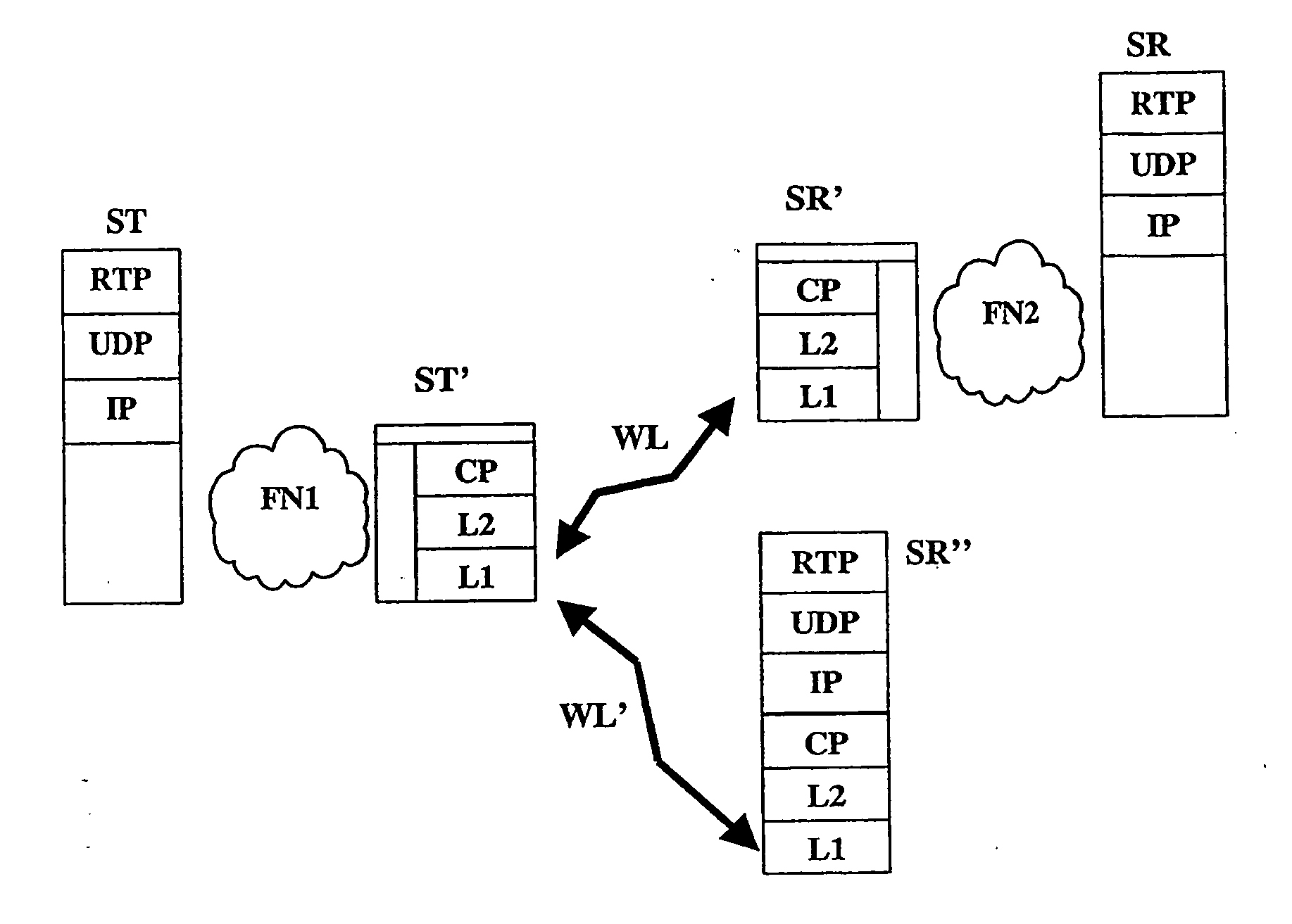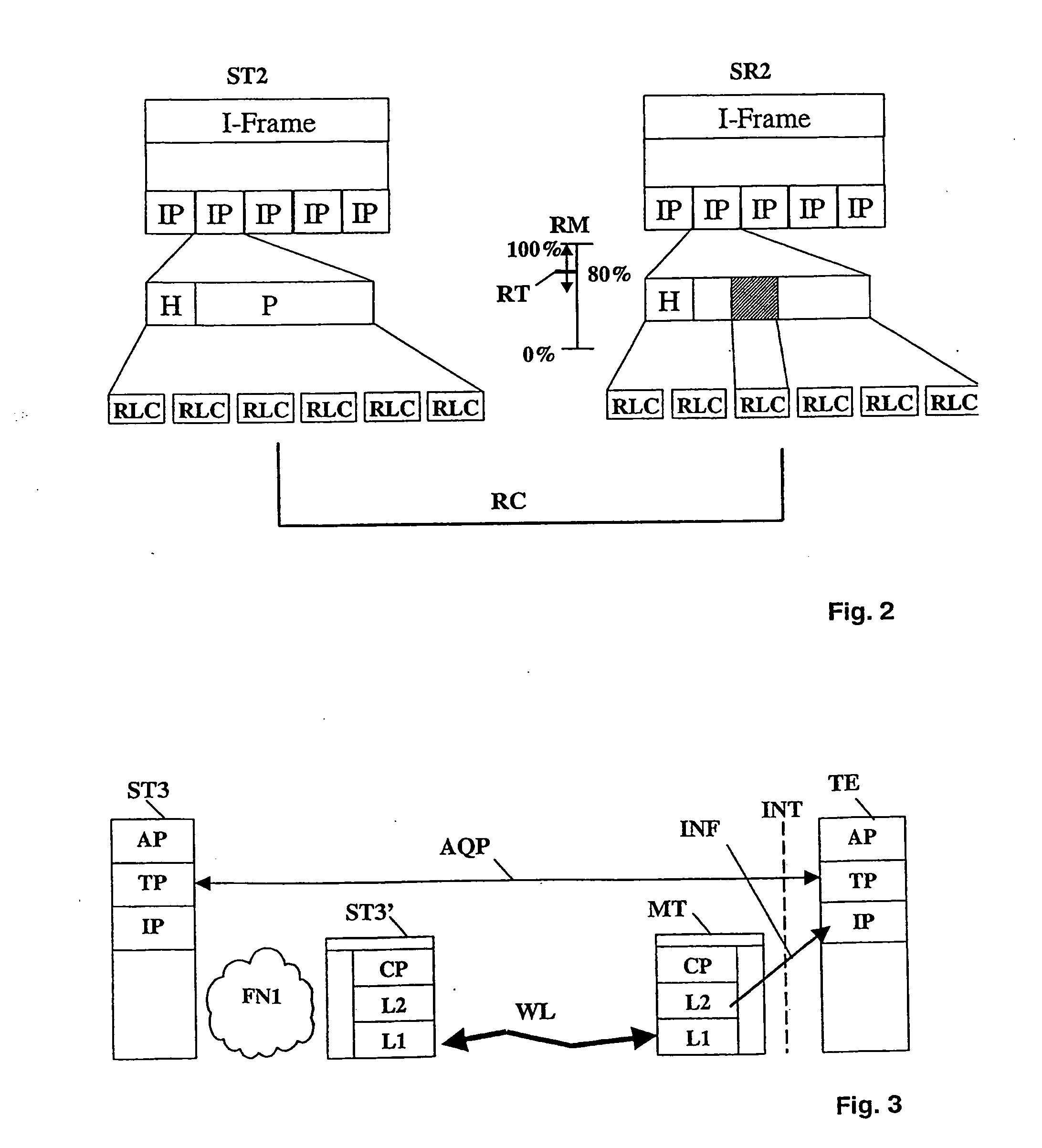Method and devices for error tolerant data transmission, wherein retransmission of erroneous data is performed up to the point where the remaining number of errors is acceptable
a data transmission and error-tolerant technology, applied in the field of method and device for error-tolerant data transmission, can solve the problems of incomplete packet loss, inability to adapt to error-tolerant applications, and errors in transmitted data, etc., and achieve the effect of effective data transmission
- Summary
- Abstract
- Description
- Claims
- Application Information
AI Technical Summary
Benefits of technology
Problems solved by technology
Method used
Image
Examples
Embodiment Construction
[0036] In FIG. 1a, a data transmission is shown from a transmitter ST to a receiver SR with the corresponding protocol layers. The connection is performed over different networks FN1, FN2 and includes an unreliable link WL between an optional intermediate receiver SR′ and an optional intermediate transmitter ST′. In FIG. 1a, different entities are the transmitters and receivers for different protocol layers on the wireless link WL, i.e. for the three lower layers the intermediate receiver SR′ and intermediate transmitter ST′ are the entities involved while higher layers are only processed in transmitter ST and receiver SR. Networks FN1, FN2 are optional entities and it is customary, e.g. for a mobile phone, that all protocol layers are integrated in a single device SR″ connected to the intermediate transmitter ST′ over a wireless link WL′. However, a Bluetooth network, infrared links or another ad hoc network FN2 may connect different user devices, e.g. laptop, mobile phone or perso...
PUM
 Login to View More
Login to View More Abstract
Description
Claims
Application Information
 Login to View More
Login to View More - R&D
- Intellectual Property
- Life Sciences
- Materials
- Tech Scout
- Unparalleled Data Quality
- Higher Quality Content
- 60% Fewer Hallucinations
Browse by: Latest US Patents, China's latest patents, Technical Efficacy Thesaurus, Application Domain, Technology Topic, Popular Technical Reports.
© 2025 PatSnap. All rights reserved.Legal|Privacy policy|Modern Slavery Act Transparency Statement|Sitemap|About US| Contact US: help@patsnap.com



